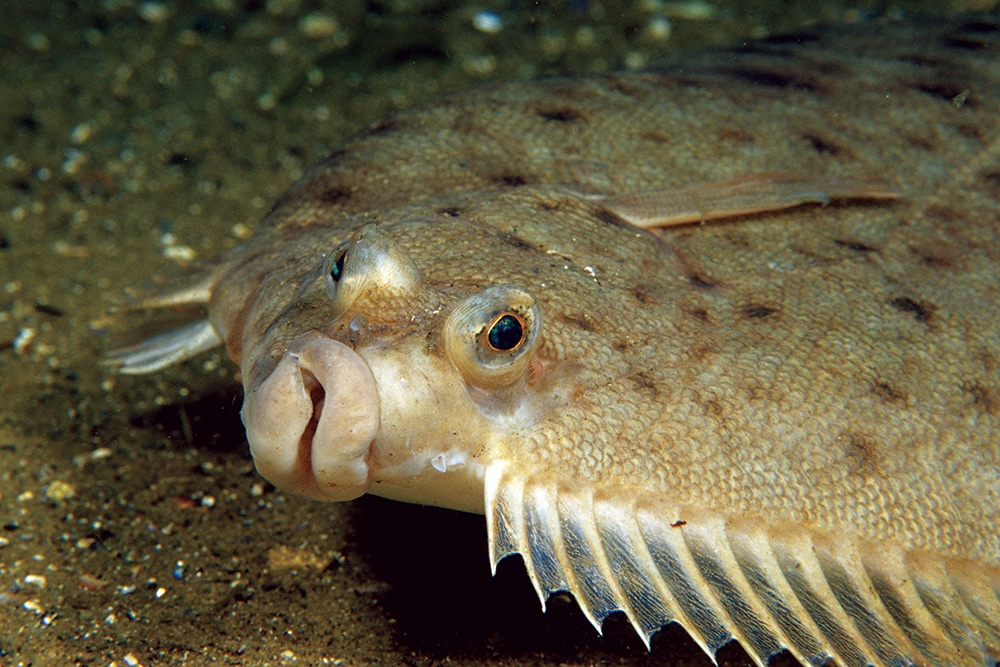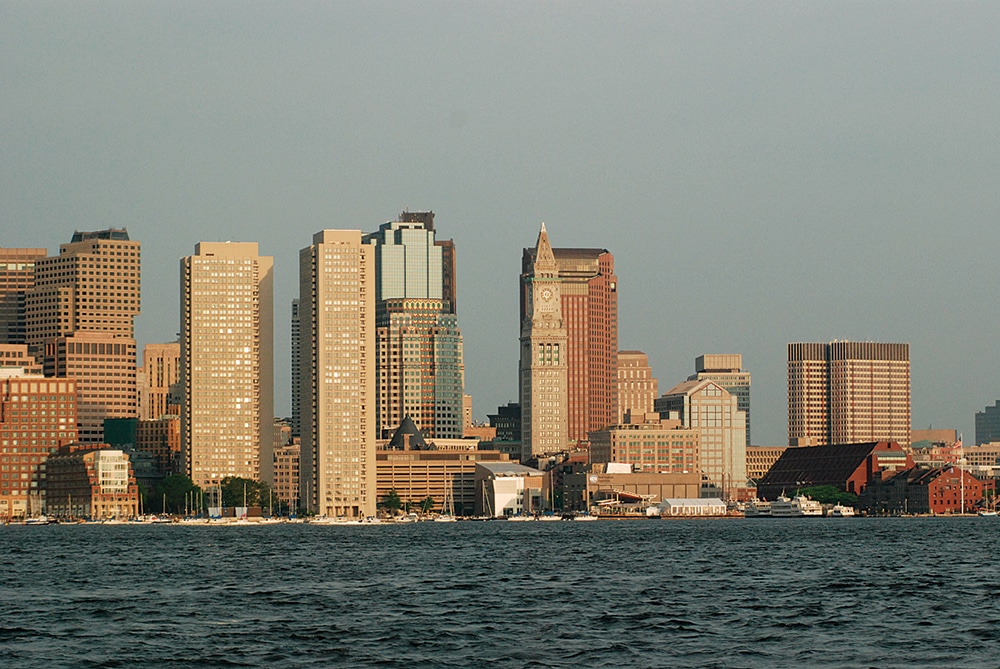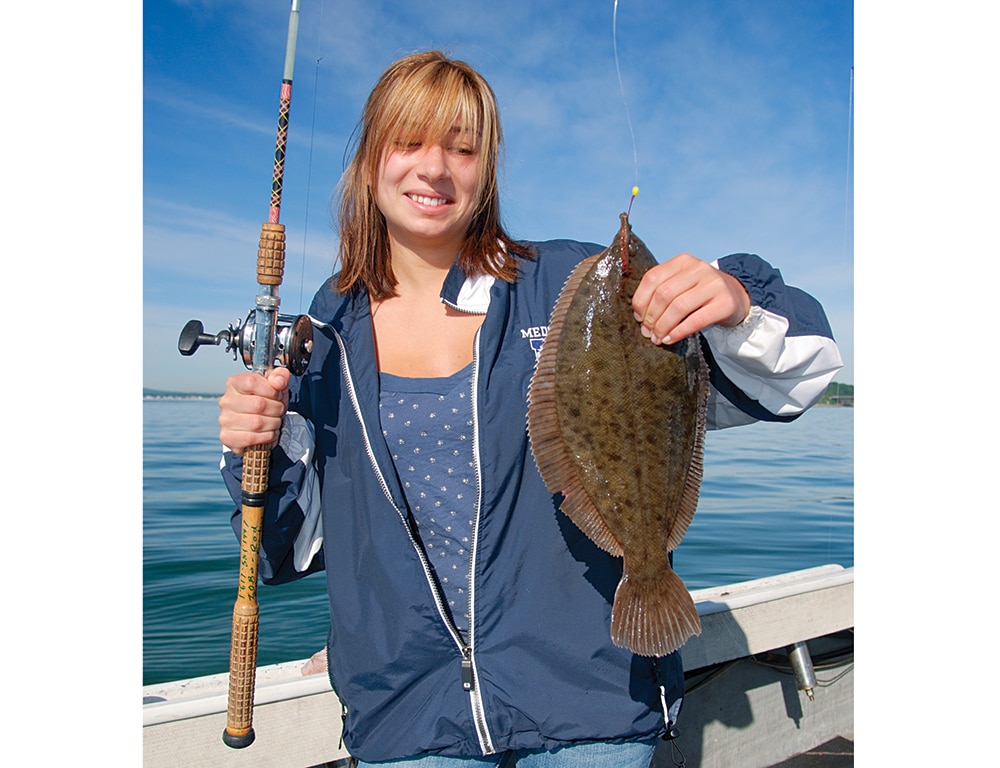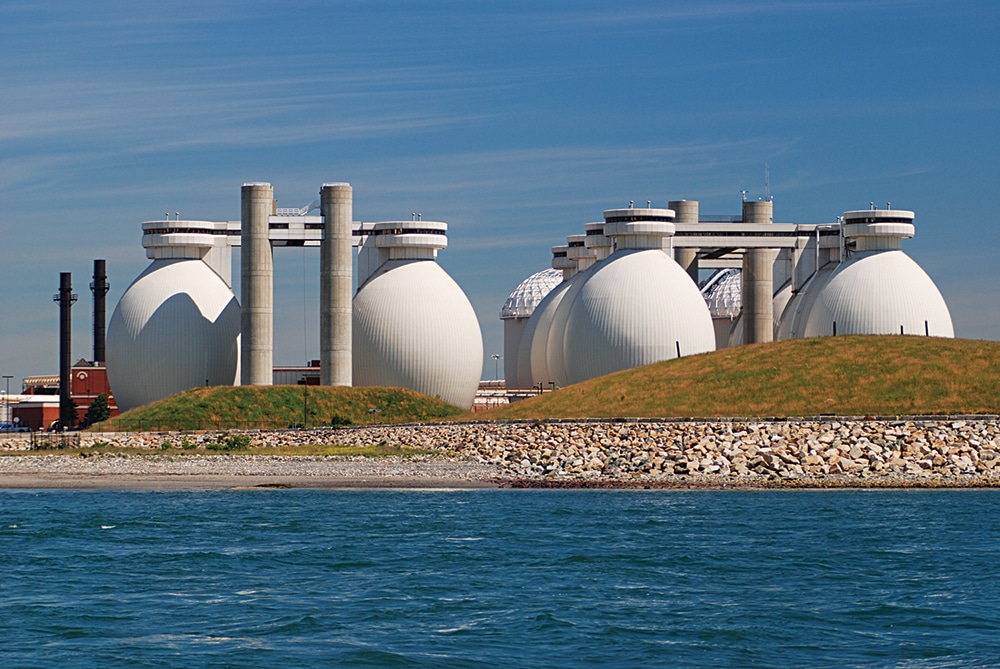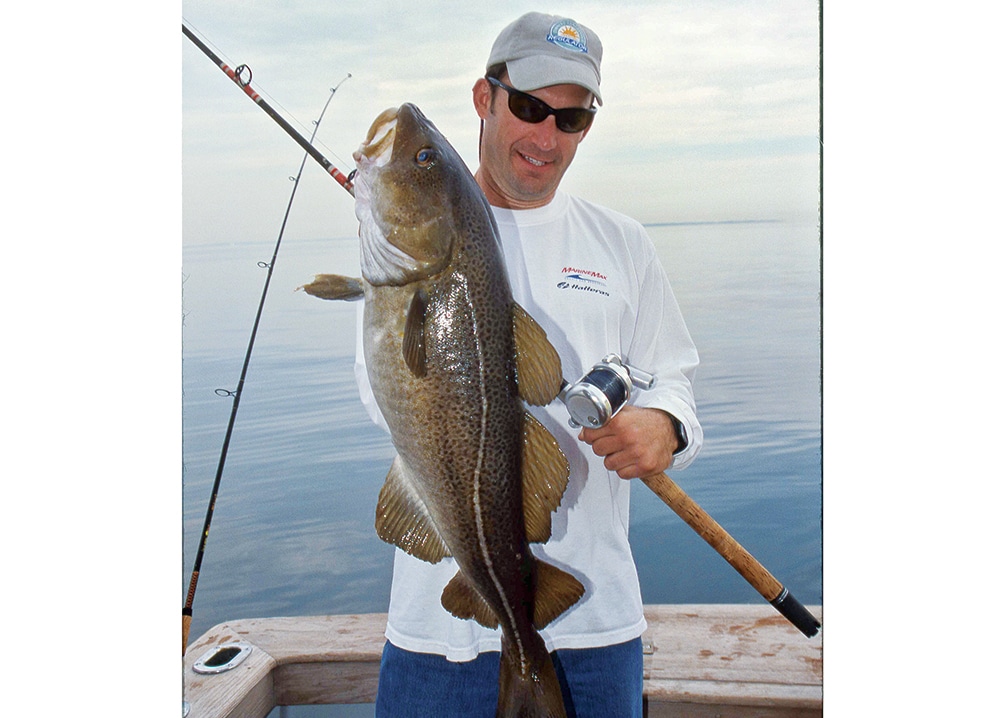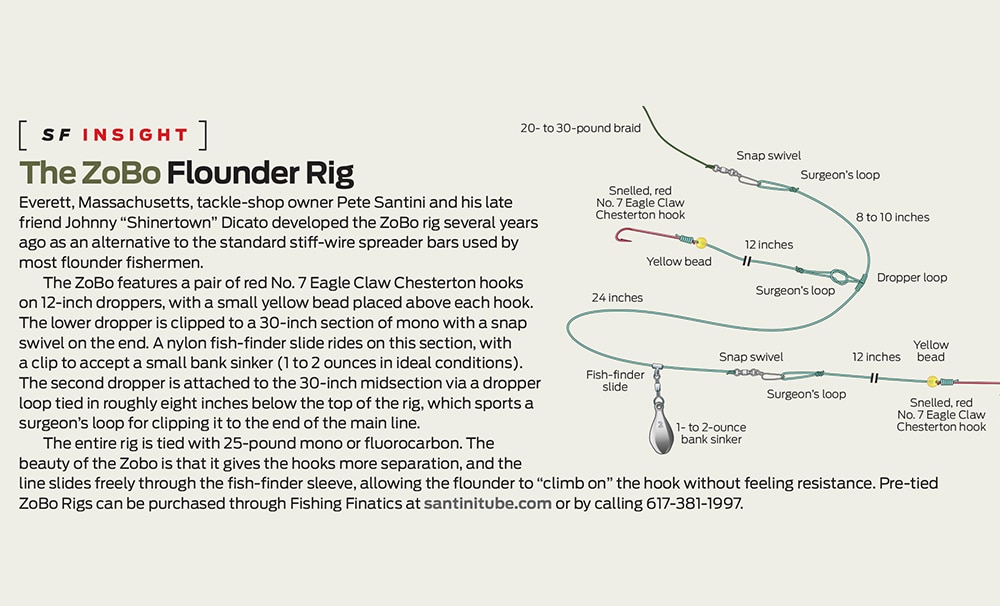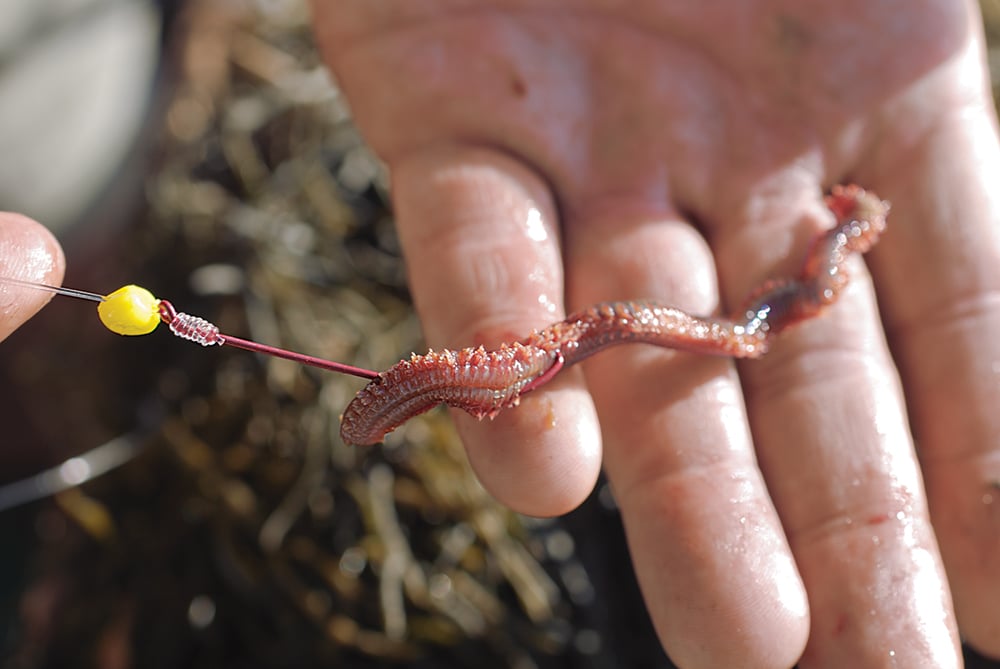“Hey guys, I think you’ll want to check out this fish,” Vin Vettese called from the bow of his 25-foot Hydra-Sports. The soft-spoken Vettese, of Malden, Massachusetts, usually goes about his fishing in a quiet, workmanlike manner; so his summons, combined with the exaggerated bend in his light spinning rod, drew everyone’s attention.
Pete Santini, a Boston-area tackle-shop owner and nonstop source of onboard entertainment, peered into the water and gave a shout as I trained my video camera on the action. “Now this is a fish you want on YouTube!” he cried, carefully slipping a landing net below the brown, platter-size object undulating just below the surface.
Santini and Vettese had promised that I’d see some big winter flounder on our late-June trip in Boston Harbor, and here was proof beyond my wildest expectations — a 21-inch, 4-pound blackback!
“A phonebook with fins,” Santini declared, clearly proud of the local fishery and its remarkable success story.
A Rejuvenated Fishery
Winter flounder, aka blackbacks, have made an amazing comeback in the waters of Boston Harbor, marking a return to the type of fishing that drew busloads of anglers from as far away as New York in the 1970s and early 1980s. Overfishing and pollution once decimated the fishery, but tighter regulations on inshore gill-netting and improvements to Boston’s sewage-management system have spawned a return to the glory days of flounder fishing.
“I grew up just outside Boston, and fished Quincy and Dorchester bays a number of times back in the late-1970s, but gave up when the water quality declined and the flounder started to disappear in the early ’80s,” recalls Barry Gibson, the former editor of Salt Water Sportsman magazine. “I’ve also fished this area numerous times since 1995, and I have watched the flounder action improve steadily as the water got cleaned up. My most recent trip was this past May, and I think the flounder fishing today is every bit as productive as it was 35 years ago. The fish are plentiful, and there are lots of big ones, bigger than I remember. Plus, you have a good shot at catching a black sea bass or maybe a tautog or fluke. These bonus fish never used to roam north of Cape Cod, but they now add some extra zing to Boston Harbor floundering.”
In a fitting tribute to the cleanup of Boston Harbor — once the most polluted waterway in the nation — Santini, Vettese and I were hauling in flounder just a few hundred yards from the giant egg-shaped tanks of the Deer Island sewage-treatment facility on the north side of the harbor. The massive plant, which went online in 1995, treats the effluent of greater Boston’s 2.5 million residents so thoroughly that you can safely drink the end product (the treated water is actually carried nine miles offshore through an underwater pipe).
Find ‘Em in the Mud
The Deer Island flats, which extend south and west of the treatment plant, are perfect flounder habitat. With a depth of seven to 20 feet, the mud bottom hosts a smorgasbord of marine worms, shrimp, bivalves, tiny crabs and other flounder forage. Similar bottom can be found throughout the harbor. You’ll often find the fish stacked up in depressions or along the edge of a drop-off. Mud, of course, is the key to finding flounder.
Fishing for Boston blackbacks, which typically range from 12 to 18 inches, is relaxing sport, and the protected waters of the harbor make this fishery accessible to a variety of boats, from aluminum skiffs to 40-foot lobster boats. During our trip, we shared the flats with even a few kayak fishermen.
While many flounder fishermen like to anchor and let their quarry come to them, Santini and Vettese prefer to drift so they can cover more ground and present their baits in a natural manner. Blackbacks hold in different depths based on water temperature, so you often need to scout around a bit before you dial in the hot spot.
The fish typically move onto the flats in 10 to 20 feet of water by late May. As the water starts to warm in late June, they begin dropping toward the deeper channel edges in 30 to 35 feet. By mid-July, the action inside the harbor is largely over.
Ideal conditions consist of a sunny day (flounder become more active as the sun warms the dark bottom) with a light breeze and current moving in the same direction. If the wind is pushing you along too quickly to keep your bait on the bottom, a sea anchor or a five-gallon bucket can be deployed. Or you can drop anchor and kick back once you find the fish. If the action is slow, send down a chum bag filled with corn niblets, crushed mussels or clams to draw in the fish.
Relaxed, Old-School Fishin’
Terminal rigs range from the standard two-hook spreader setup to the more sophisticated ZoBo Rig (see SF Insight and illustration in above gallery), which features a pair of red No. 7 Chesterton hooks. A small bank sinker (1 to 2 ounces) on a nylon fish finder allows movement of the leader for a more natural presentation. Yellow beads are placed just ahead of the hooks to add a bit of color, intended to imitate a mussel or clam.
As for bait, nothing beats sea worms, and you should bring at least one flat to last two or three anglers through the tide. Santini rigs the worms as he would a soft-plastic bait, inserting the hook point in the tip of the worm’s head and threading the shank through the body.
Rods and reels need not be expensive or fancy. Indeed, Santini’s favorite combo — nicknamed “Old Betsy” — is a 1960s-era, wood-handled, 5-foot, solid-fiberglass boat rod paired with a small Penn 9 baitcaster. The best flounder rods, however, sport super-sensitive tips for detecting subtle bites. Assisting in this department is no-stretch braided line; anywhere from 20- to 30-pound-test is a good choice. “Go as light as you can,” Santini advises.
Knowing when and how to set the hook on a flounder takes a bit of finesse. The key is to let the flounder “climb on” the hook by dropping the tip slightly once you feel a light tap on the bait or slight resistance. Count one or two seconds, then lift the rod slowly and evenly until you feel the weight of the fish. If you miss the fish, immediately lower the rig back to the bottom.
One of the very best things about this fishery is its accessibility. The Boston Harbor Islands — now a National Recreation Area, with camping available on several islands — provides a magnificent setting with protection from the wind and seas, and there are numerous access points from which to launch a boat.
Best of all, there’s nothing quite like fishing in the shadow of a major metropolitan city, with planes roaring overhead and container ships gliding past. Combine that with some of the best-eating fish on Earth, and you’ve got the makings of a memorable trip.
All this is a testament, of course, to sound fishery management with an emphasis on water quality. The good ol’ days are back again in the famous Boston Harbor.
About the Author: Tom Richardson (tom@boatinglocal.com) is the publisher and editor of boatinglocal.com, a New England-based online boating and fishing magazine. He also edits New England Boating magazine, and contributes stories and photos to many national marine publications, including Sport Fishing.
